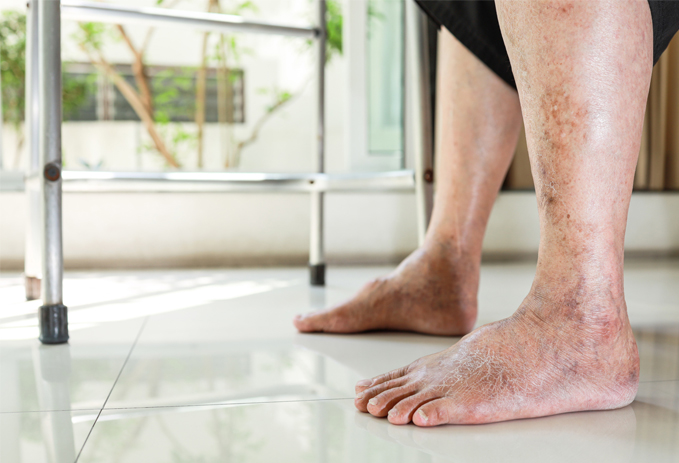Peripheral Arterial Disease is a common vascular disease caused by clogged arteries in the legs and arms and affects the lower limbs the most.
A study suggests that around 8 – 12 million people in America and around 113 million people worldwide suffer from PAD. So, everyone above the age of 50 needs to know what PAD risk signs are.
Especially people in their 50s with diabetes, high cholesterol levels, obesity, and high blood pressure should be aware as they are more susceptible to Peripheral Arterial Disease (PAD).
How does Peripheral Arterial Disease occur? What happens is that the plaque (fat and cholesterol) accumulates in the wall of the arteries which narrow down resulting in decreased blood circulation.
When the blood flows slowly through the arteries, it fails to deliver enough oxygen and nutrients to the arms and legs, which leads to symptoms like:
- Discoloration
- Cramps
- Numbness and pain
- Weak pulses
- Poor wound healing, etc
In severe cases, untreated PAD leads to Gangerine or worse, amputation.
To have a deeper understanding of this serious health condition, we are sharing 4 PAD risk signs so you can identify them early and get treatment.
Walking Triggers Pain Anywhere From Hip to Calf
If walking triggers cramps or pain in the buttocks, thighs, hip, and especially calves that means you are experiencing one of the PAD risk signs. The pain sometimes reaches the feet and toes.
One of the major signs of Peripheral Arterial Disease is Intermittent Claudication. It is a condition where you feel pain only while walking and the pain recedes when at rest.
The Affected Leg May Lose Color And Feel Cold
Feeling coldness around your legs indicates Peripheral Arterial Disease. As soon as you see your foot color change to a blue or purplish hue, visit a doctor because it is a sign of restricted blood flow which may put your limb at risk.
Your Leg Wounds Are Not Healing
People with Peripheral Arterial Disease may have foot ulcers. It happens because the foot is not receiving enough oxygen and nutrients due to slow blood circulation which slows down the healing of foot sores.
When the blood flow drops to a critical level, gangrene may set in, and the doctors are left with no other option than to amputate the affected area to stop the gangrene from spreading further.
Diabetic people are especially at risk of slow wound healing. Anyone with PAD should look out for these PAD risk signs related to poor wound healing.
- Pus leaking from the wound
- There is a warm feeling around the sores
- Redness, tenderness, or numbness
- The edges of the wound turn darker
You Are Experiencing Weak Pulses or Loss of pulse in The Legs
The pulse grows weak in the leg where the arteries are blocked. The narrow arteries fail to supply oxygen to extremities due to plaque buildup in the arteries. The complete loss of pulse in the legs is alarming because it is an indication of limb-threatening conditions like gangrene.
Some Other Symptoms To Monitor
- Skin grows shiny.
- Painful cramps in the arms when doing any activity.
- Leg hair and toenails stop growing due to a limited supply of nutrients.
- Burning or aching sensations in feet while lying down or resting.
The American Diabetes Association reports that 1 in 3 diabetic people over the age of 50 are diagnosed with PAD. So, they are more at risk and should look out for the signs we have mentioned above.
This disease sometimes goes undiagnosed due to a lack of awareness of the symptoms. The sooner you catch the PAD risk signs the better because if left untreated it can lead to gangrene.

